Did you know that ancho peppers, often known for their moderate heat and sweet, raisin-like fruity flavor, are a staple in Mexican cuisine? These dried peppers are not only versatile but also offer a unique depth of flavor that can elevate any dish. Whether you’re a spice enthusiast or simply looking to expand your culinary horizons, learning how to use ancho peppers will open up a world of possibilities in your kitchen.
From classic recipes like mole sauce and chili con carne to fusion creations and spicy pepper-infused dishes, ancho peppers have become a go-to ingredient for home cooks and professional chefs alike. Their rich flavor profile adds complexity and warmth to sauces, soups, stews, and more. Additionally, ancho peppers can be ground into a powder or soaked and blended into a paste, allowing for easy customization of heat levels and easy incorporation into various recipes.
Are you ready to embark on a flavorful journey through the world of ancho peppers? Join me as I guide you through their culinary uses, share mouth-watering recipes, and explore the history and global impact of these remarkable peppers. Let’s unlock the secrets of ancho peppers and savor the heat together!
Key Takeaways:
- Ancho peppers are dried, ripe poblano peppers with a sweet and raisin-like fruity flavor.
- They are versatile and widely used in Mexican, Tex-Mex, and fusion dishes.
- Ancho peppers contribute to the complex flavors of mole sauces, salsas, soups, and other dishes.
- Exploring ancho pepper recipes can offer a delightful culinary experience.
- The history of chili peppers and the spice trade has shaped the global popularity of spicy foods.
The Holy Trinity – Ancho, Mulato, & Pasilla
The Holy Trinity of Mexican chilies consists of ancho, mulato, and pasilla peppers. These dark, sweet, and relatively mild dried peppers are essential ingredients in mole sauces.
Ancho peppers are dried, ripe poblano peppers with a sweet and fruity flavor. They add depth and richness to dishes, creating a complex flavor profile.
Mulato peppers, on the other hand, are made from dried ripe poblanos and have a slightly smoky and fruity flavor. They contribute a unique taste to mole sauces, complementing the other ingredients.
Pasilla peppers, also known as pasilla negro peppers, are made from dried ripe chilaca peppers. They have a flavor similar to ancho peppers but with more heat. Pasilla peppers add a spicy kick to mole sauces, enhancing the overall taste.
These peppers are used in a wide range of Mexican dishes for their rich and complex flavor.
With their distinctive flavors and culinary versatility, ancho, mulato, and pasilla peppers play an integral role in Mexican cuisine, particularly in the creation of mole sauces. These sauces are known for their depth of flavor and complex heat, combining spices, nuts, chocolate, and chilies to create a truly unique taste experience.
The All Purpose Reds – Cascabel, Guajillo, & Puya
When it comes to adding depth and complexity to Mexican cuisine, the trio of cascabel, guajillo, and puya peppers is a winning combination. These versatile red chilies are a staple in a variety of dishes, bringing unique flavors and just the right amount of heat.
Cascabel Peppers
Cascabel peppers are round mirasol chili peppers that pack a punch of flavor. With a fruity and slightly smoky taste, these peppers add a distinct richness to any dish. They are often used in salsas, sauces, and stews, providing a sharp and acidic flavor profile.
Guajillo Peppers
For a tangy and sharp flavor, look no further than guajillo peppers. These long and flat mirasol chili peppers bring a unique zing to Mexican cuisine. With a vibrant red color and a taste that balances acidity and heat, guajillo peppers are perfect for marinades, salsas, and traditional Mexican sauces.
Puya Peppers
If you’re looking to amp up the heat in your dishes, puya peppers are the way to go. These thin mirasol chili peppers are similar in flavor to guajillo peppers but with an extra kick. With their intense heat and earthy undertones, puya peppers are often used in spicy salsas and sauces, adding a fiery touch to your favorite Mexican dishes.
“Cascabel, guajillo, and puya peppers add unique flavors and just the right amount of heat to Mexican cuisine.”
| Pepper Variety | Flavor | Heat | Culinary Uses |
|---|---|---|---|
| Cascabel Peppers | Fruity and slightly smoky | Low to medium | Salsas, sauces, stews |
| Guajillo Peppers | Sharp and tangy | Medium | Marinades, salsas, sauces |
| Puya Peppers | Sharp, acidic, and earthy | Medium to high | Spicy salsas, sauces |
Smoked Chilies – Chipotle Meco, Morita, & Pasilla de Oaxaca
When it comes to adding a rich and smoky flavor to your dishes, look no further than the trio of chipotle meco, morita, and pasilla de Oaxaca peppers. These smoked chilies are a staple in Mexican cuisine and can elevate your culinary creations with their distinct taste.
Chipotle meco peppers are made from dried and heavily smoked ripe jalapeño peppers. The intense smoky taste of these peppers can infuse your dishes with a depth of flavor that is hard to replicate. Whether used in salsas, marinades, or barbecue sauces, chipotle meco peppers bring a bold and smoky kick to every bite.
Morita peppers are a smoked variety of chipotle peppers with a similar flavor profile but slightly less heat. These peppers are known for their smokiness and their ability to add complexity to dishes without overpowering the other flavors. From spicy salsas to hearty stews, morita peppers can be relied upon to bring a unique and balanced smoky heat.
Pasilla de Oaxaca peppers are long and thin smoked chilies that closely resemble pasilla peppers in flavor. These peppers have a rich and smoky taste that adds depth to any dish. Pasilla de Oaxaca peppers are versatile and can be used to enhance flavors in salsas, soups, and other Mexican dishes.
The culinary uses of these smoked chilies are varied and diverse. They can be used as a standalone ingredient or combined with other peppers to create complex flavor profiles. The smoky notes of chipotle meco, morita, and pasilla de Oaxaca peppers can complement both savory and sweet dishes, making them an essential ingredient for any aspiring chef.
So why not embark on a culinary adventure and experiment with the bold flavors of these smoked chilies? Let your dishes come alive with the rich and smoky taste that only chipotle meco, morita, and pasilla de Oaxaca peppers can provide.
Bring the Heat – Árbol, Chile Japones, & Pequin
When it comes to adding intense heat to dishes, Árbol, Chile Japones, and Pequin peppers are the go-to choices in Mexican cuisine. These hot peppers pack a fiery punch that can take your taste buds on an exhilarating journey. Let’s take a closer look at each one:
Árbol Peppers
Árbol peppers are small and thin, but don’t let their size fool you. These peppers bring the heat with a fiery flavor that can bring tears to your eyes. They are a staple in Mexican cooking, known for their intense spiciness. The high capsaicin content in Árbol peppers makes them perfect for those who crave a real kick of heat in their dishes.
Chile Japones
Similar in size to Árbol peppers, Chile Japones peppers offer a smokier taste along with their fiery heat. They bring a deep and complex flavor profile to dishes, making them a popular choice for adding a spicy kick to salsas, hot sauces, and chili powders. Chile Japones peppers infuse dishes with their distinctive smoky flavor, creating a truly memorable culinary experience.
Pequin Peppers
Known for their small and round shape, Pequin peppers pack a fruity and fiery flavor that can ignite your taste buds. These tiny peppers are not to be taken lightly, as they deliver a powerful punch of heat. Pequin peppers are often used in Mexican dishes that require a bold and spicy flavor, such as spicy salsas and marinades.
These hot peppers are prized for their ability to add a vibrant heat to various Mexican dishes. Whether you’re looking to spice up your homemade salsa or create a mouth-watering hot sauce, Árbol, Chile Japones, and Pequin peppers are your secret weapon in the kitchen.
“Árbol, Chile Japones, and Pequin peppers bring the heat and spice up your culinary creations with an explosion of fiery flavor.”
Discover the culinary uses of these hot peppers and explore the exciting world of Mexican cuisine with sensational spiciness.
| Pepper | Size | Flavor | Heat Level |
|---|---|---|---|
| Árbol Peppers | Small and thin | Fiery | High heat |
| Chile Japones | Similar to Árbol peppers | Smoky | High heat |
| Pequin Peppers | Small and round | Fruity and fiery | High heat |
Recipes
If you’re feeling hungry and want to try out some delicious recipes using ancho peppers, here are a few ideas:
- Ancho Chile Chicken Tacos: A flavorful twist on traditional chicken tacos, these Ancho Chile Chicken Tacos are filled with tender, marinated chicken and topped with a zesty ancho pepper salsa. The combination of the smoky ancho peppers and the juicy chicken creates a mouthwatering dish that is sure to be a hit at your next Mexican-themed dinner party.
- Ancho Pepper Enchiladas: These Ancho Pepper Enchiladas are a perfect way to showcase the rich and earthy flavors of ancho peppers. Filled with a hearty mixture of meats, vegetables, and cheese, these enchiladas are smothered in a tangy ancho pepper sauce and baked to perfection. Serve them with a dollop of sour cream and a sprinkle of fresh cilantro for a truly memorable meal.
- Ancho Roasted Sweet Potatoes: Elevate your side dish game with these Ancho Roasted Sweet Potatoes. The combination of the sweet potatoes and the smoky ancho peppers creates a unique flavor profile that is both sweet and savory. Simply toss the sweet potatoes with some olive oil, ancho pepper powder, and a pinch of salt, then roast them in the oven until tender and golden brown.
- Ancho Pepper Chocolate Truffles: Indulge your sweet tooth with these decadent Ancho Pepper Chocolate Truffles. The rich and creamy chocolate ganache is infused with the smoky heat of ancho peppers, creating a delightful balance of flavors. Roll the truffles in cocoa powder or finely chopped nuts for an extra touch of indulgence.
These recipes showcase the diverse culinary uses of ancho peppers and highlight the unique flavor they bring to dishes.
The History of Heat
Chili peppers have a rich and fascinating history that spans continents and centuries. From their origins in the Americas to their global proliferation through the spice trade, chili peppers have left an indelible mark on culinary traditions worldwide.
It is believed that chili peppers were first domesticated in Central and South America thousands of years ago. Native American tribes cultivated and consumed a wide variety of peppers for their flavors and medicinal properties. The cultivation of chili peppers eventually spread throughout the Americas, creating a diverse array of pepper varieties.
During the age of exploration, European explorers encountered chili peppers during their voyages to the New World. Captivated by the unique flavors and vibrant colors of peppers, these explorers brought them back to Europe, where they quickly became sought-after commodities.
The introduction of chili peppers into Asian cuisines was particularly significant. Peppers found their way into the spice trade network, fueled by the demand for exotic flavors and the exploration of new trade routes. The exchange of goods between continents facilitated the global proliferation of chili peppers and the incorporation of spicy flavors into diverse culinary traditions.
One of the key compounds responsible for the heat in chili peppers is capsaicin. In the early 20th century, pharmacist Wilbur Scoville developed the Scoville Scale to measure the pungency or spiciness of peppers. The scale is based on the amount of capsaicin present in a pepper and provides a standardized way to quantify and compare the heat levels of different pepper varieties.
“Chili peppers have been cherished for centuries for their ability to add flavor, heat, and excitement to dishes. They have become an essential ingredient in cuisines around the world.”
Today, the love for heat and spice continues to thrive in culinary traditions worldwide. Chili peppers have become integral to numerous regional cuisines, offering a thrilling sensory experience to adventurous eaters.
As we delve further into the world of spicy food, we explore the diverse flavors, heat levels, and culinary uses of different pepper varieties. From mild and sweet to fiery hot, chili peppers have something to offer for every palate.
Complex Heat: A Culinary Trend
The culinary world is currently experiencing a fascinating trend – the rise of complex heat. Chefs and food enthusiasts are increasingly exploring the nuanced flavors and heat notes found in different peppers, elevating their dishes to new heights. This trend is driven by a deep appreciation for the complexity and diversity that peppers bring to the table.
At the heart of this trend are capsaicinoids, the compounds responsible for the heat in peppers. These capsaicinoids not only provide the characteristic spicy kick but also contribute to a wide range of flavors and heat sensations. From the fiery intensity of arbol peppers to the subtly smoky undertones of chipotle meco peppers, each pepper variety offers a unique combination of heat and flavor.
One of the key factors that has fueled the popularity of complex heat is the Scoville Scale. This measurement system allows us to gauge and compare the heat levels of different peppers, helping chefs and consumers make informed choices. As our understanding of peppers has grown, so has our appreciation for the wide spectrum of heat flavors they offer.
“Complex heat is about embracing the diverse range of flavors and heat sensations that peppers bring to our dishes.”
Food experts predict that complex heat will continue to dominate the culinary landscape. As consumers become more adventurous in their taste preferences, they are seeking out peppers with specific heat flavors to enhance their culinary creations. From the fruity heat of cascabel peppers to the earthy spiciness of pasilla de Oaxaca, the possibilities are endless.
Embracing Nuanced Flavors
One of the main attractions of complex heat is the ability to explore the delicate balance between flavors. Peppers not only offer heat but also add depth, complexity, and character to dishes. Whether it’s the smoky heat of morita peppers in a mole sauce or the subtle sweetness of dried ancho peppers in a savory marinade, the nuanced flavors that peppers bring to the table are truly remarkable.
Unleashing Creative Culinary Possibilities
The rise of complex heat has opened up a world of creative opportunities in the kitchen. Chefs are experimenting with new combinations of peppers, blending different heat levels and flavors to create unique taste experiences. From spicy cocktails infused with chile japones to desserts with a touch of ancho pepper chocolate, the culinary landscape is constantly evolving.
Complex heat allows us to push the boundaries of traditional culinary norms and elevate our dishes to new heights. By embracing the diverse flavors and heat sensations that peppers provide, we can embark on a culinary journey that delights and surprises our taste buds.
The Future of Heat
As the culinary trend of complex heat continues to gain momentum, it is clear that peppers have secured their place as a staple ingredient in kitchens worldwide. This trend reflects our ever-growing fascination with exploring the intricate flavors and sensations that peppers bring to our dishes. Whether we’re seeking a fiery kick or a subtle warmth, peppers provide us with a diverse range of options to satisfy our taste preferences.
So, whether you’re a spice aficionado or a curious home cook, embrace the culinary trend of complex heat and embark on a flavorful journey. Allow the capsaicinoids, the heat flavors, and the Scoville Scale to guide you as you explore the world of peppers and unlock their hidden culinary potential. Remember, complex heat is not just about spice—it’s about capturing the taste, the thrill, and the joy that peppers bring to our plates.
Conclusion
Ancho peppers are a beloved and versatile ingredient in Mexican cuisine. With their unique combination of sweet and fruity flavor and moderate heat, ancho peppers add a delectable complexity to a wide range of dishes. From rich mole sauces to zesty salsas, ancho peppers bring depth and vibrancy to Mexican recipes.
The culinary uses of ancho peppers are diverse and exciting. They can be used to infuse flavor into marinades, soups, stews, and even desserts. Their versatility makes them a staple in Mexican cooking, and they are often featured in the country’s most iconic dishes.
In the vibrant world of chili peppers, ancho peppers stand out for their exceptional flavor and heat profile. Whether you’re a seasoned spice lover or just beginning to explore the world of Mexican cuisine, adding ancho peppers to your culinary repertoire is sure to elevate your dishes and transport your taste buds to the sun-soaked streets of Mexico.

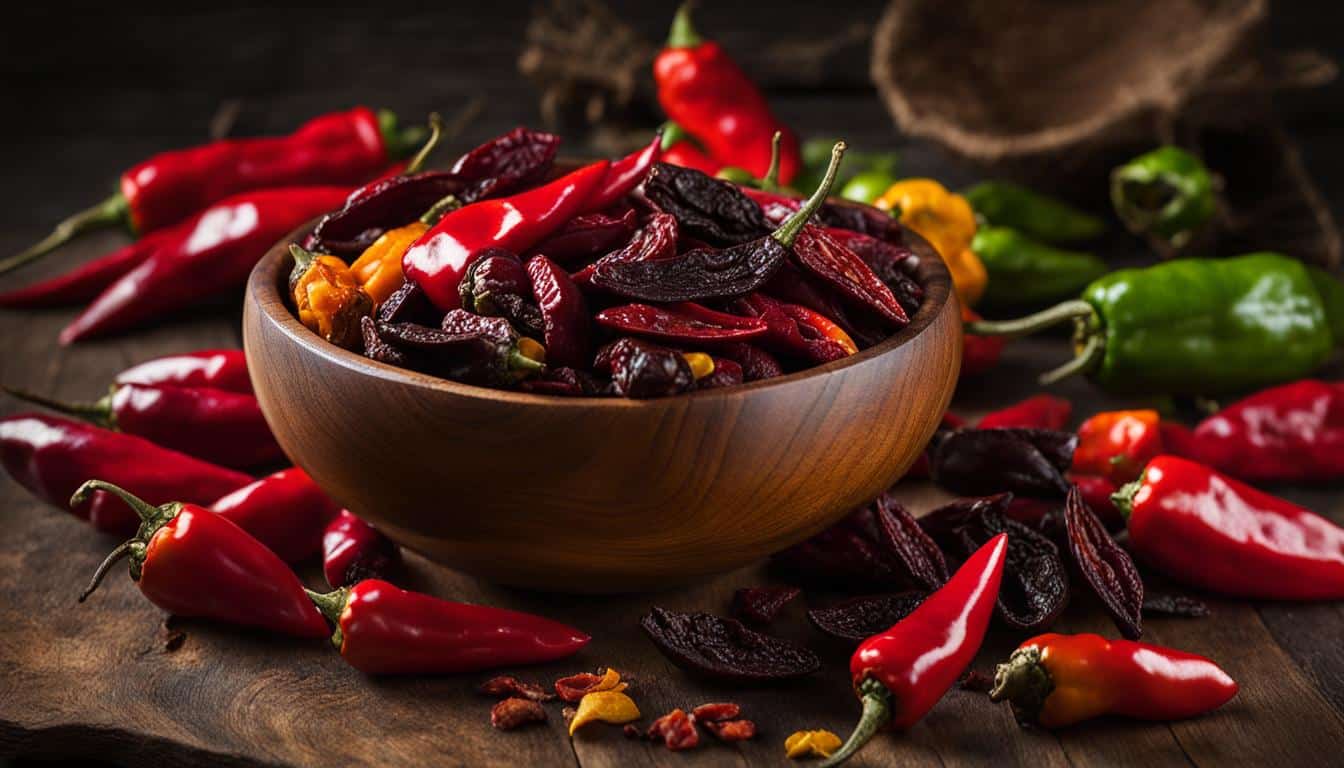
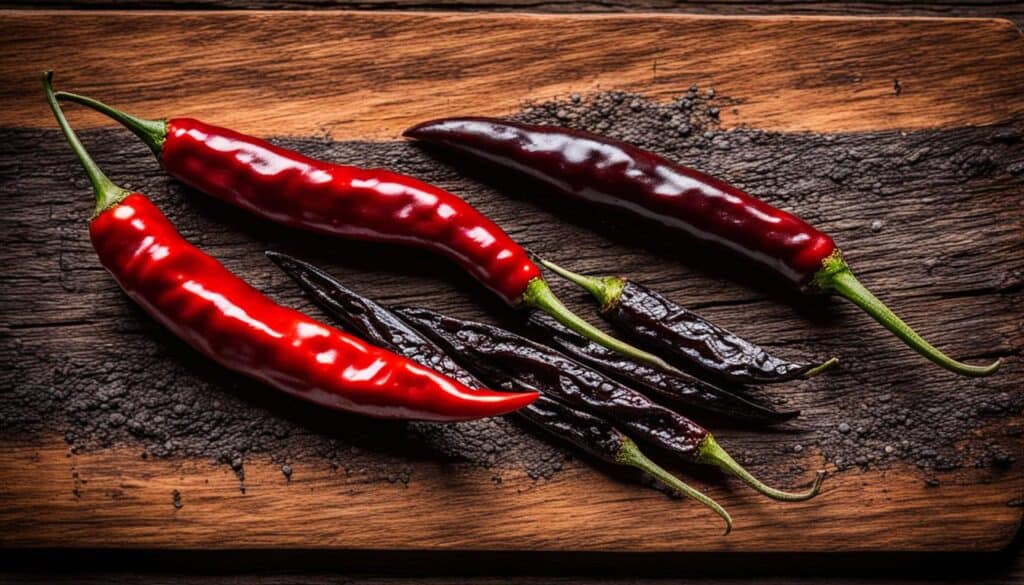
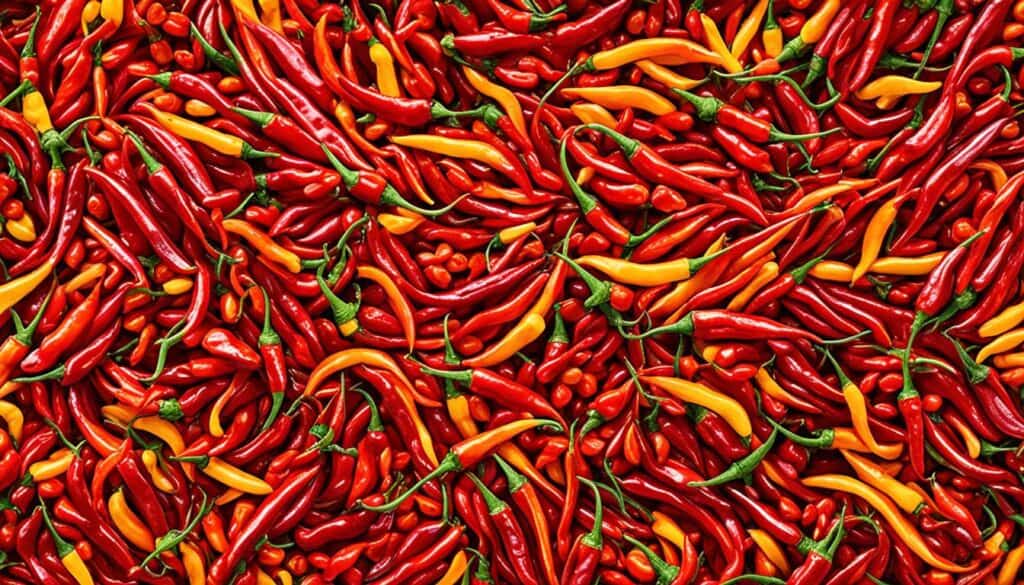
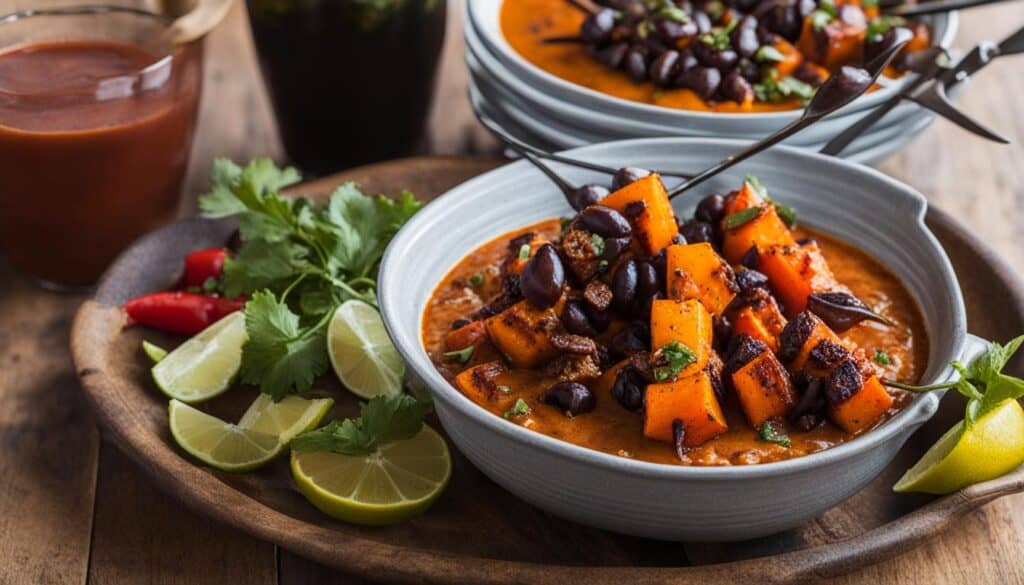
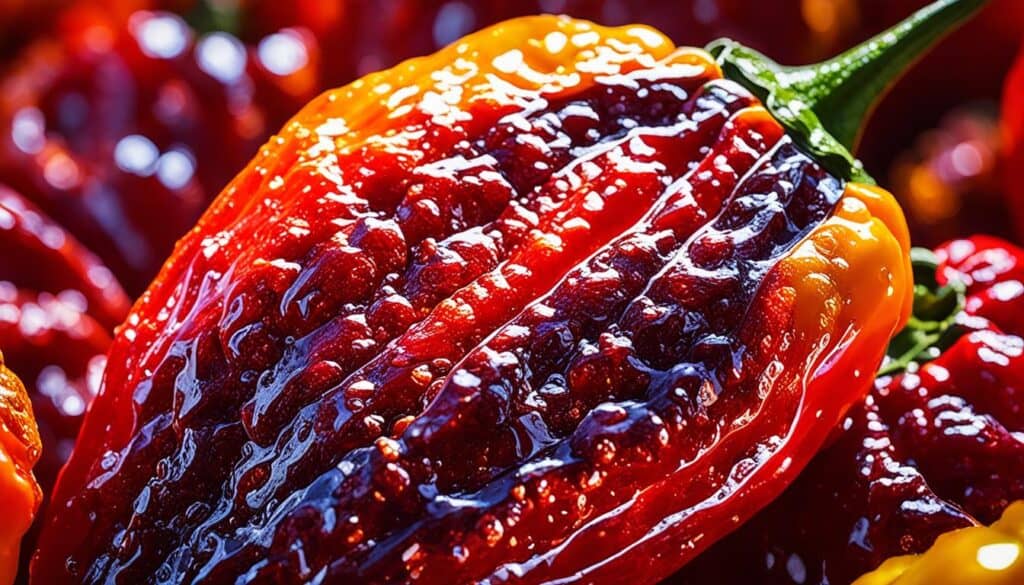
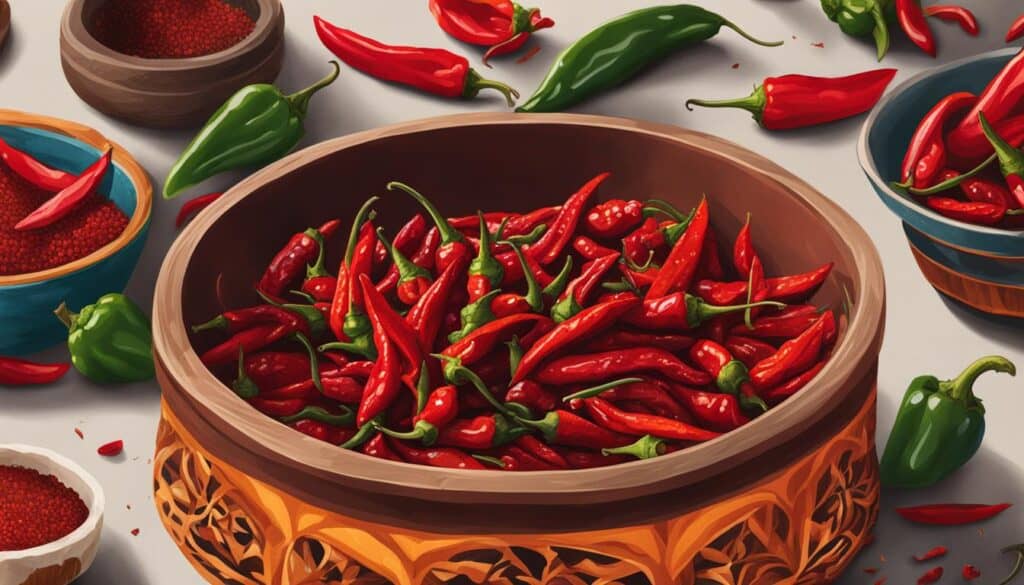



Leave a Reply